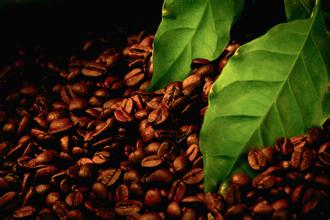The name and definition of the three major coffee growing regions in Tanzania
3 major planting areas
View
North: harvest season 1 and 2: July-December
West: March and 4th harvest season: may-October (3 for Luodou area)
South: may and June harvest season: July-December
The total planting area is about 250000 hectares.
Economic importance
Support 400000 families and contribute 15 per cent of foreign exchange each year
Cup test performance
The northern coffee is full of aroma, bright acidity, mellow taste, and thanks to the rich volcanic soil, it is as sweet as mineral water.
Southern coffee has rich floral aromas, smooth taste and elegant acidity.
Tanzania is a potential coffee, but sometimes its flavor is not really shown. One reason is that Tanzania does not have the same road infrastructure as Kenya, and coffee in containers ages (or at a high temperature) during transportation. I often drink very good Tanzanian samples, but sometimes I also drink very bad coffee. The problem is that Tanzania only knows that no matter whether the quality is good or bad, they can make a profit from the beans. So what is the motivation for locals to pick and take good care of coffee in time to prevent such defective beans?
Blackburn Estate from Ngorogoro has always been an excellent variety and has the highest evaluation in recent memory. The producing area also has a very good flavor, which is southern coffee with northern genes. The beans of Kibo are bulky and seem to have been cooked at high temperature. The coffee in the south is clean and full, and its mild and unexciting flavor is second only to Kenya. In the past, we had a small batch of coffee beans that represented a step forward compared to other producing areas.
The difference between AA,A,B and Eforce AFMagTT lies in its weight. In grading screening, the machine is screened according to the number of eyes, and there is also something similar to a hairdryer (Air Blast) that blows out the lighter ones. Some students will ask: why do beans that look the same have a big difference in weight? Physical analysis is: light lack of coffee should have the substance (Cantonese: unexpected). How did this happen? It's completely linked to planting. Such as: root protection, appropriate cutting, covering (high vegetation next to coffee trees), fertilization. It seems like raising a child.

Important Notice :
前街咖啡 FrontStreet Coffee has moved to new addredd:
FrontStreet Coffee Address: 315,Donghua East Road,GuangZhou
Tel:020 38364473
- Prev

Geo-climatic production process of coffee in Rwanda
Maraba Coffee, the geographic and climatic editor, is grown in southern Rwanda, about 12km (7 miles) from the city of Butare and 150km (93 miles) from the capital, Gejali. The plan began in the Malaba area of Butare province, but was taken over by a local government organization in 2006, which is now part of the Huye district of the southern province. Due to its proximity to the East African Rift Valley and Neuenweisen,
- Next

The historical characteristics of mocha coffee beans and their taste
1. Taste: slightly sweet with soft acidity, sweetness has its unique round ripe taste and its unique sweet, sour and bitter taste is extremely elegant. 2. Fragrance: full-bodied aromas of fruit and grass. 3. Vision: the characteristics of mocha coffee with small bean particles and uneven bean color Ethiopia, known as the birthplace of coffee, has a history of coffee origin and traditional agricultural countries.
Related
- Does Rose Summer choose Blue, Green or Red? Detailed explanation of Rose Summer Coffee plots and Classification in Panamanian Jade Manor
- What is the difference between the origin, producing area, processing plant, cooperative and manor of coffee beans?
- How fine does the espresso powder fit? how to grind the espresso?
- Sca coffee roasting degree color card coffee roasting degree 8 roasting color values what do you mean?
- The practice of lattes: how to make lattes at home
- Introduction to Indonesian Fine Coffee beans-- Java Coffee producing area of Indonesian Arabica Coffee
- How much will the flavor of light and medium roasted rose summer be expressed? What baking level is rose summer suitable for?
- Introduction to the characteristics of washing, sun-drying or wet-planing coffee commonly used in Mantenin, Indonesia
- Price characteristics of Arabica Coffee Bean Starbucks introduction to Manning Coffee Bean Taste producing area Variety Manor
- What is the authentic Yega flavor? What are the flavor characteristics of the really excellent Yejasuffi coffee beans?

